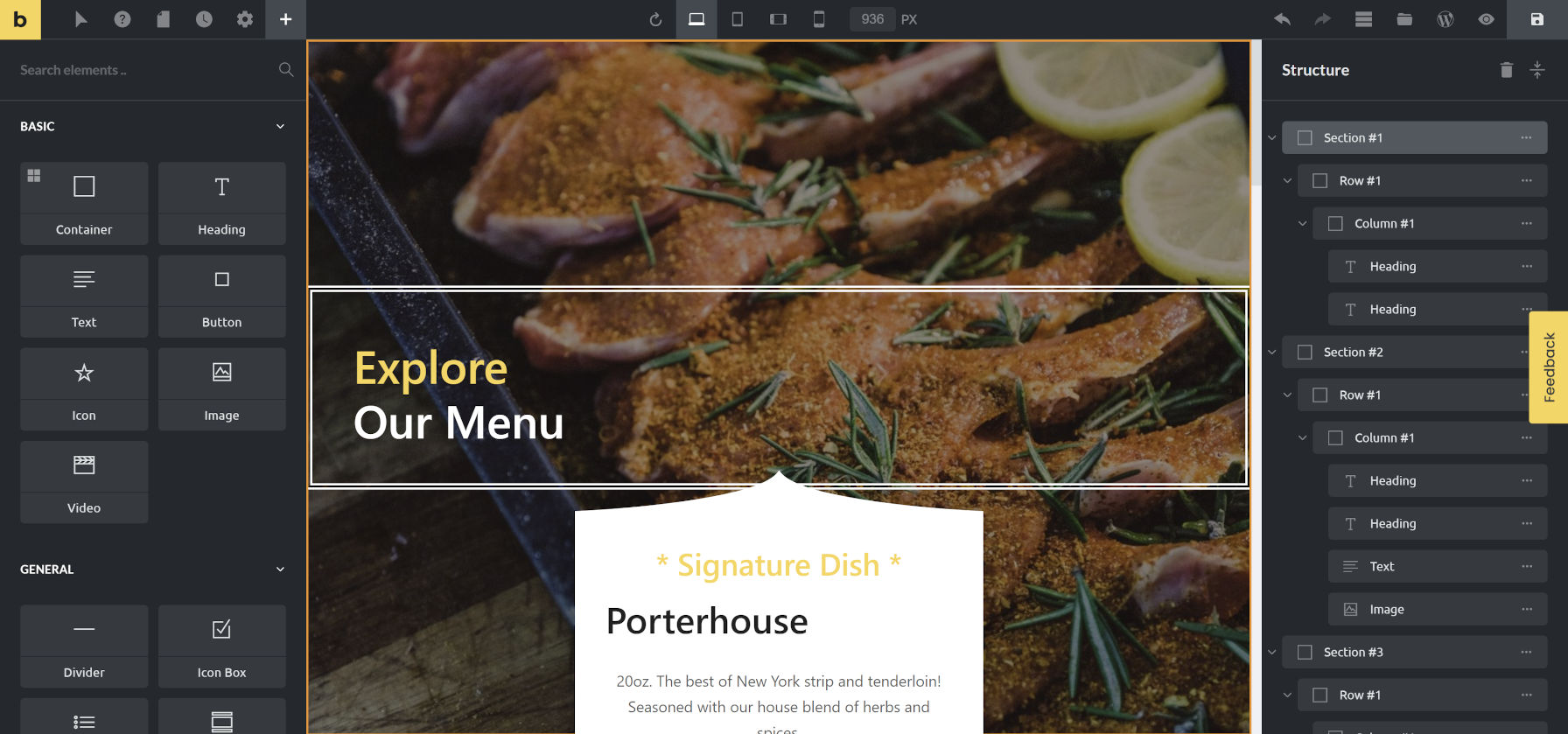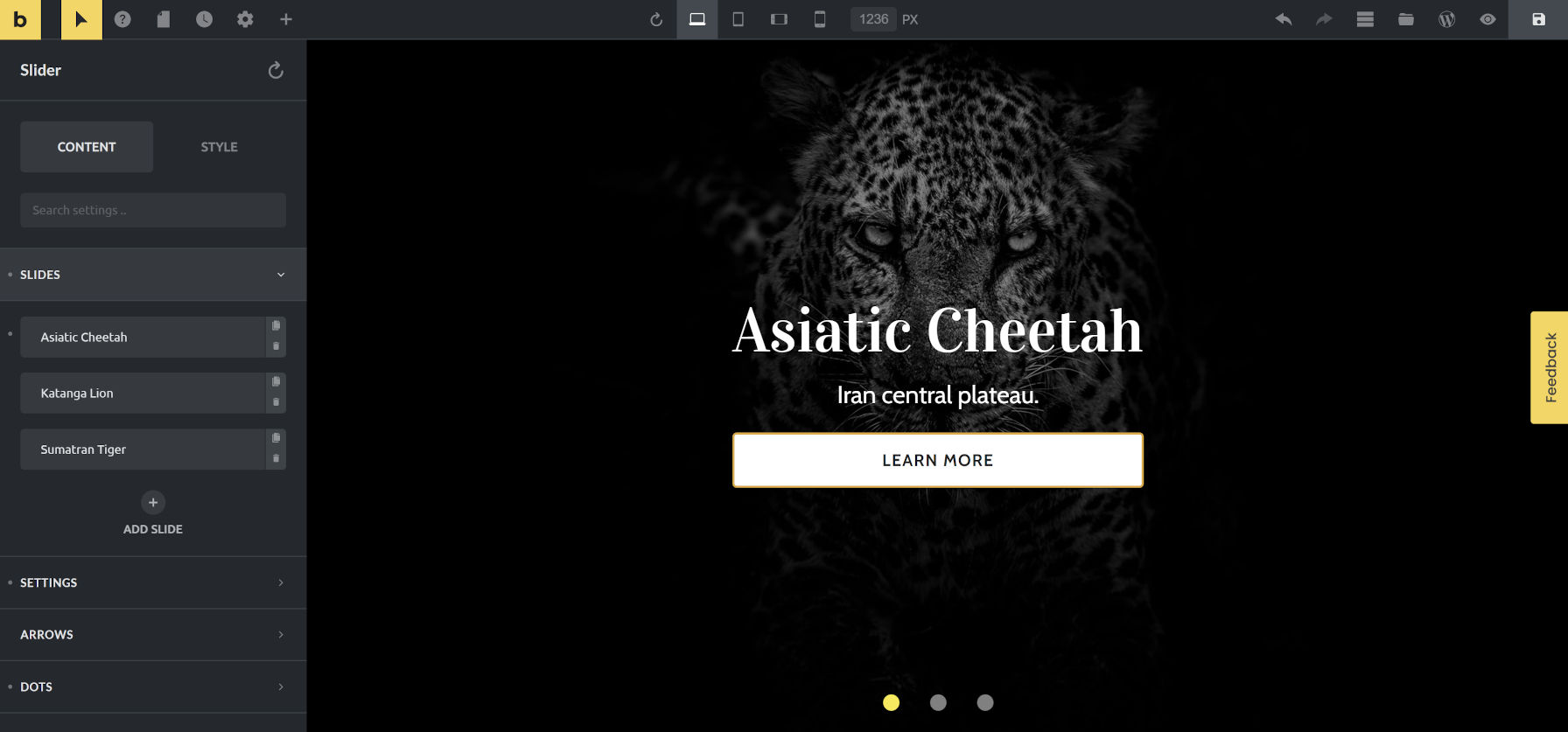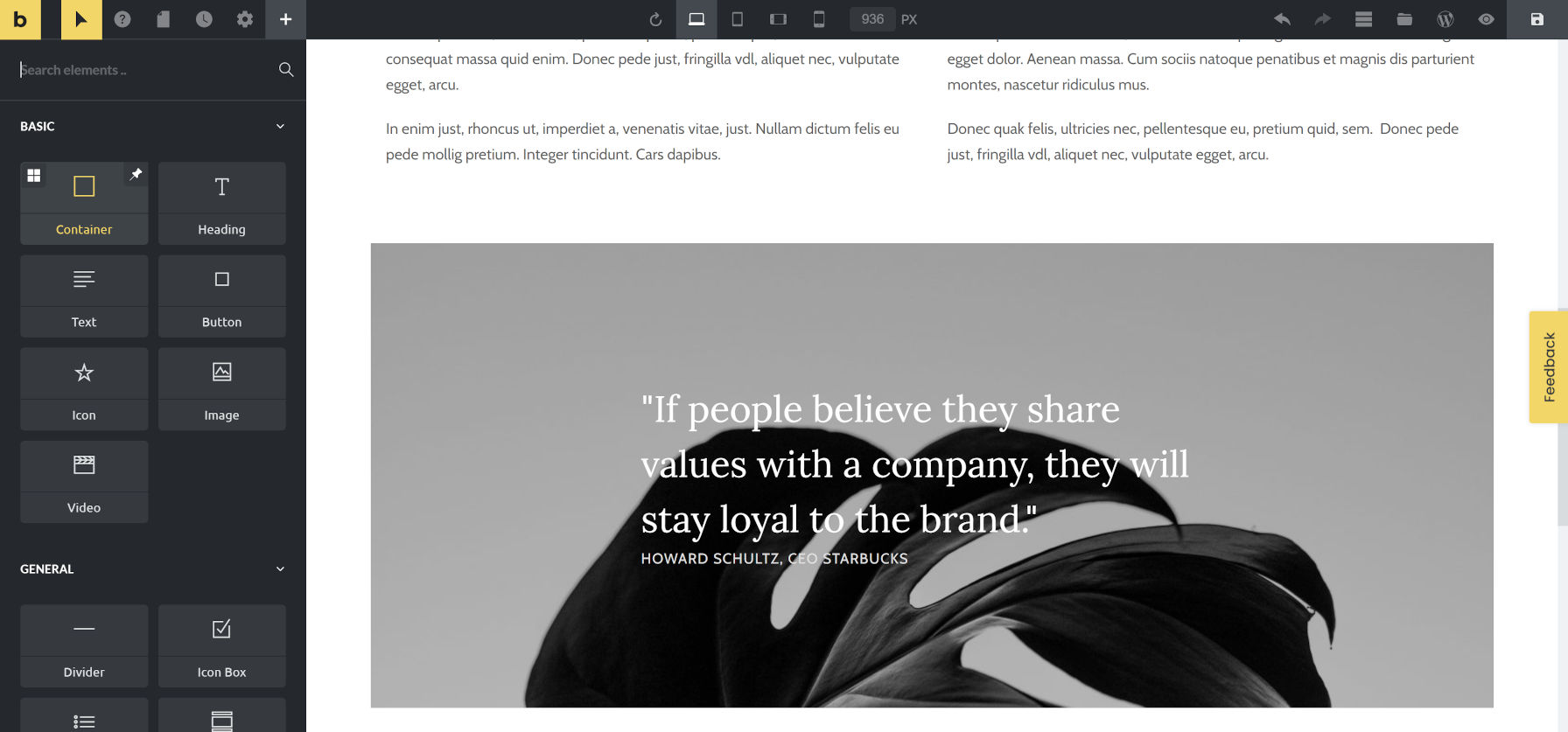In a mature and ever-growing market of WordPress page builders, Thomas Ehrig decided to bring a new product to the ecosystem. Joined by Luis Godinho, the initial team launched Bricks in March. Unlike most other builder plugins, the project is bundled as a theme.
As a small, 100% bootstrapped company, the team decided against going the freemium route. Pricing currently starts at $59 for a lifetime license, but that could change as the business model evolves. Potential customers are encouraged to test the product out via the open playground demo site.

“Bricks aims to provide an all-in-one site-building platform that empowers you to create beautiful, fully-fledged, and responsive sites that rank,” said Ehrig. “Without having to buy and rely on dozens of expensive and disjointed plugins.”
One of the problems that the team wanted to avoid was end-users trying to find a Bricks-compatible theme. Instead of offering a default or placeholder, Bricks serves as an all-in-one bundle.
The difference between a theme and a plugin is mostly a semantic one in WordPress. Aside from a few small things, a theme can do anything a plugin can do and vice versa.
“The main advantage I see providing it as a plugin is from a marketing perspective,” said Ehrig. “Elementor has done a fantastic job in this department. As you can see on the many free and premium themes that it comes bundled with. This greatly helped boost its exposure in the early days.”
Aside from a few users trying to install it as a plugin, he said the team has been happy serving Bricks as a theme.
He described the builder as a “theme that aims to tame the plugin madness.” The focus is on customization, design, and performance, but the development process is user-driven. All of this is done in the open via the project’s idea board, forum, and Facebook group. Users can submit feature requests, which others can vote and comment on. The team builds its development roadmap from this foundation.
Voting systems like this often work well in a project’s early history. However, they can become unruly as audiences grow. We will have to check in with Bricks a year or two down the road to see how their feedback system has evolved.
“We don’t build in secret,” said Ehrig. “Our public roadmap makes sure everyone knows at all times what to expect and what’s next. It also keeps us accountable. If you are not only looking for a beautiful builder that is fun to work with, but where you have an actual say about its development, I think you should take Bricks for a spin.”
Bricks is bringing in its third team member to develop predesigned templates. However, they are already looking to grow the team more. Their current need is for a Vue.js and WordPress developer.
Building in an Established Market

Elementor has become the de facto standard for third-party page builders. Others have made dents, and WordPress is launching several sub-components of its Full Site Editing experience in version 5.8. It is getting crowded, but Ehrig believes there is plenty of seats left at the table.
“The WordPress builder market is well established,” he said. “This actually gave me the confidence to start this project in the first place. It’s been heavily validated, and it’s not going away anytime soon.”
Not wanting to launch a half-baked builder, he said the team forwent a deadline for their version 1.0. They wanted to create an MVP with all the essentials and hit the ground running. Based on the initial feedback in the past couple of months, he said it is clear there is still space in the market.
Personally, I think there is always going to be space. After all, we are talking about tens of millions of WordPress sites that need to be launched, re-built, managed, and constantly optimized. It’s also not a winner-takes-all market, which is nice.
Your users’ trust and loyalty have to be earned every single day. If not, many move on to a different solution. As the web design and development landscape evolves, so has your product.
All those moving pieces ensure that no single player can rest on his/her laurels for long. Meaning there are always going to be opportunities if you take the time to look out and execute on them.
While the builder is somewhat of a competitor against the core platform it is built upon, it works alongside WordPress. Users can convert their block-built pages into Bricks data. This data conversion works the other way around too.
“So there is no lock-in effect,” said Ehrig of the feature, which his team made available from Day 1. “Which I think is really important. If someone decides to move away from Bricks, we don’t want him/her to be tied to our platform.”
The team is also exploring the concept of creating blocks visually within Bricks. The goal is to enable more integration between the two, but they must wait to see how Full Site Editing evolves in the coming months to know what that might look like.
Version 1.2 and Beyond

Last week, the Bricks team launched version 1.2 of its builder. It is touting its new “Container” element, which is essentially a box to put other items in. Users can control its display settings, and it already supports flex layouts, which many designers will welcome. Grid layouts are forthcoming, according to Ehrig.
“After that, I am currently very excited about the upcoming visual WooCommerce builder,” he said. “It’s a very challenging integration to get right. Not just code-wise, but also from a UI/UX perspective.”
Of the several things he thinks the team has gotten right, he mentions data integration with popular plugins like Advanced Custom Fields, Meta Box, Pods, and CMB2. He also said the version-1.0 features like global theme styles, responsive editing modes, and color palettes were things the team nailed down.
“But the one thing we are most proud of is not even a feature and something no one has really any control over,” said Ehrig. “And that’s the community that has formed around Bricks and its cause.”
In two months, its Facebook community has grown to 2,000+ members. “Very active, positive, and helpful,” he said. “You can’t put a price tag on that.”
